|
The "K" Twins: David Kipp and Ray Killian
The last big dog-fight of WW-II over Japan
Ray Killian
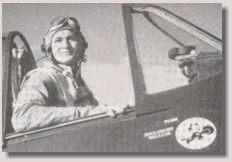 |
The "K Twins" as we called them, David Kipp and Ray Killian joined Fighting Squadron Six
(VF-6) at Santa Rosa, CA in April 1944, at the time when VF-6 and the whole air group was just starting to reform
with an influx of many new pilots. The air group was getting ready to deploy again for another tour of combat duty
in the Pacific.
David Kipp
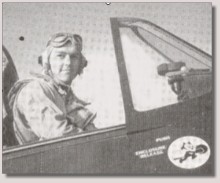 |
David Kipp and Ray Killian had received specialized training in aerial photography and knew how to
use the new F6F-5P Hellcats we were expected to have soon. At Santa Rosa, The "K" twins received more
training with the squadron in gunnery, bombing, rocketry and carrier landing qualifications on the USS Ranger CV-4. They deployed
with the squadron in November to Hilo Hawaii, where the Air group continued training while waiting to be assigned
to a carrier with the fleet further west.
Corkey Wickham
 |
While waiting, Killian and Kipp were teamed up with "Corkey" Wickham and Danny Lamb as
a division. Wickham was a combat seasoned pilot having had a tour of duty with VB-9 in SBD dive-bombers. Danny
Lamb had not had Photographic training; however, he had joined VF-6 during the previous cruise and had seen combat
on the USS Intrepid in the Marshalls and at Truk Atoll. The four of them became known as the Photo division.
Danny Lamb
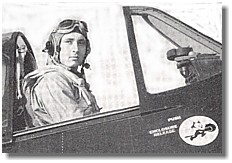 |
The Photo division went aboard the USS Hancock CV-19 at Ulitii Atoll with the rest of Air Group Six on March 9, 1945.
With their special capability, they usually were given special photo missions in addition to the strike missions
they were involved with. Their planes were usually armed and loaded with rockets and or bombs as any other hellcat
strike aircraft. They were highly professional and the intelligence people were well pleased with the results of
their photographic work.
These photo pilots did not always fly together. Sometimes one or two of them would be traded to become
a part of another fighter division for a specific mission. Such was the case on the last day of the war.
On 15 August 1945, David Kipp and Ray Killian were assigned to my (Hersch Pahl's) fighter division
and my second section, Dick Olson and Morie Shay, were assigned or traded to the Photo division leader, Corkey
Wickham and Lamb. Then the two divisions, (mine and Corkey's), were sent on the same mission (Sweep Able One);
however, each division had different photo assignments as well as different strike assignments.
By the time this mission was in its planning stage, I knew these two gents well and was pleased to
share our assignments. We were up early and had a leisure breakfast together in the wardroom about 0230. There
was some relaxed jovialation going on, while each of us had our own way of controlling our nerves, and at the same
time getting mentally ready for the mission. Since the atomic bombs had been dropped a few days earlier, there
was unspoken high hopes that the fighting would soon end.
Between 0300 and 0400 our briefings took place right there in the wardroom. This big compartment
was located just under the hanger deck where the 3" armored deck offered more protection for the pilots than
the ready rooms up under the flight deck. There was the usual weather, navigation and force briefings in addition
to the special mission briefings. As this took place we were donning our flight gear; up-dating our navigation
boards and arranging reference material where we could get to it when we needed it.
Along with the "Sweep Able One" briefing that we were receiving, the Air Group Commander,
"Hank" Miller and his group were receiving a "Strike Charlie One" briefing. Their group would
be going into the same general area; however, they would be following us in about one half hour later. Their group
was made up of both torpedo and dive bomber planes with some fighters to escort them. It was important for both
groups to know where the other would be going and what their targets were.
It was still dark when we arrived on the flight deck. Thanks to the dark red goggles we had been
wearing our eyes were already night adapted, which made it easier to find our planes and our plane captains who
helped us get tucked in and all set.
Our two divisions with two Photo planes each, were launched first by catapult with a couple divisions
of F4U-4 Corsairs
launched by deck run right behind us - all part of "Sweep Able one". "Nef" Bigelow was the
over-all leader of the sweep; however, I was flying an F6F-5E which had the "APS 4" Radar, so it was
my job to lead the sweep in to land.
When we made land fall, the Fighter Bomber boys took off at greater cruise/climbing speed. The targets
assigned to them were located over on the west coast of Honshu, while our photographic assignment were about halfway
across the big island.
Soon it was time for my division to break away from Corkey and his division. Then my two plane sections
split and went off in a different direction. I gave the lead to Killian in order for them to do their photo assignment.
About that time we received an urgent message from Admiral Halsey, the Fleet Commander. "Christopher says for all Sweep Able and Strike Charlie planes
to jettison bombs and rockets and return to base." We were not to attack airborne planes unless we had to defend ourselves or if they were trying
to follow us back to base. It was obvious the war was over and our one remaining problem was to get back aboard
all in one piece.
We fighters were armed with a load of six 5" HVAR rockets and a 500# bomb. We had lugged them
that far and was reluctant to waste them; however we followed orders and shot the rockets and dropped the bombs
in a large lake and then proceeded to climb as we headed toward the coast. Directly, Corkey's division joined up
with us again. We put on oxygen masks, charged our guns and flew in a defensive formation, with the two divisions
spread out about one turning radius apart, so that we could protect each other.
We were well south of Tokyo over lower Segomi Wan and approaching 20,000 feet, when I spotted a loose
formation of enemy fighters below and behind us but coming up fast. I counted five or six behind Corkey's division
and he said later that there were about that many coming up behind me. We dropped our auxiliary fuel tanks and
then I flicked the switch to arm guns and got all set. I alerted Corkey to get ready and when the enemy fighters
were in about the right position I gave the word, "OK -Now" and turned sharply toward Corkey as his division
turned sharply toward us. This put us in a head-on firing position from the front quarter on each-other's would-be
attackers. I put my sights on the leader and blasted him; the rest of the Jap planes scattered with my guys after
them. My well bore-sighted guns simply cut that plane in pieces and then it erupted in a ball of flame. As I looked
for another target, I could see many planes milling around in one big ol' dog-fight. It was like a swarm of bees
with airplanes squirming, diving, climbing and shooting at each other. I recall the planes, while shooting, would
leave a trail of smoke much the same as ones that were on fire. There were a few "high-G" con-trails
to be seen too, which further decorated the air-mass in which this dog-fight was taking place.
I made a sharp turn and caught sight of another fighter which I got a full deflection shot at. I
am sure I hit him but I did not get to observe if I burned him or not. My wing-man, Daryl Grant, indicated that
he was taking a shot at another one at the time and didn't see the results either.
Everything was happening so fast that one acts on and sees only what is directly ahead. Suddenly
an F4U-4 Corsair
came awful close to colliding with me. I have no idea where he came from as Bigelow's F4U flight were still well
behind us.
Next I got a full deflection shot at a green colored plane with two overly big meat-balls. I know
that I hit him and he started showing smoke, but I didn't see any flame before my attention was diverted to something
else. I believe that Grant may have shot at that guy too. I was concerned with what was behind me so my head was
spinning from side to side. Following a long diving high speed chase I had used up my altitude and was screaming
along low on the water. My wing-man Daryl Grant indicated, "I am with you Hersch" and Killian said "We
have you in sight". There were no more hostile planes in sight so we took off in the direction of the fleet.
I had learned a long time ago that when I did not have an altitude advantage there was no sense to go looking for
trouble.
Corkey indicated that they were already joined up and were out ahead of us and headed for home.
Before long Ray signaled to me that they had downed two hostile planes and perhaps more, then said
"Now, Smile, for your first post- war photograph." I looked out to my right and noticed that he was out
in position to take a photo of the rest of our flight, Grant, Kipp and myself.
Ray Killian's photo of Daryl Grant, David Kipp and Hersch
Pahl - their first post-war photograph.
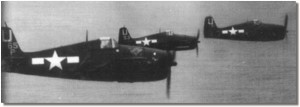 |
Back aboard the Hancock, in a debriefing, we excitedly shared our individual memories of what might
well have been "the last big dog-fight" of this long nasty war.
Later that day while the various "End of War" messages were pouring into the ship, Ray
Killian presented me an autographed photo which he had taken earlier that day. It was inscribed and autographed
so that we would never forget - "Photographed by Ens. Killian, south of Tokyo just after victory; also just
after shooting down three Japanese Planes". It was signed "RAK".
- Hersch Pahl
War is Over!!!
Corkey Wickham
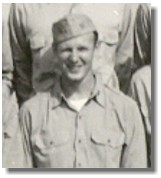 |
Danny Lamb
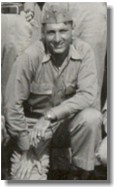 |
First section of Photo division on the USS Hancock Corky
Wickham on left and Dany Lamb on right. War is over. Smiles all around. Tokyo Bay Sept 29, 1945.
Ray Killian
 |
David Kipp
 |
Ray Killian on left and David Kipp on right. War is over.
Smiles all around. Photo taken aboard the USS Hancock while at anchor in Tokyo Bay Sept 29,1945, the day we departed
Japan headed for home.
Hersch Pahl
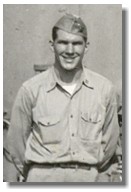 |
Hersch Pahl (left) was also happy about having flown his
last combat flight of the war with the above photo pilots, Killian (L) and Kipp (R). . Leaving Tokyo Bay Sat 29
Sept 1945.
A Reunion of old Pals..
David Kipp - Roland Baker
Ray Killian
VF-6 Corpus Christi Reunion
1998
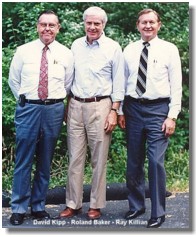 |
"For those who fought for it...
freedom has a flavor the protected will never know!"
|